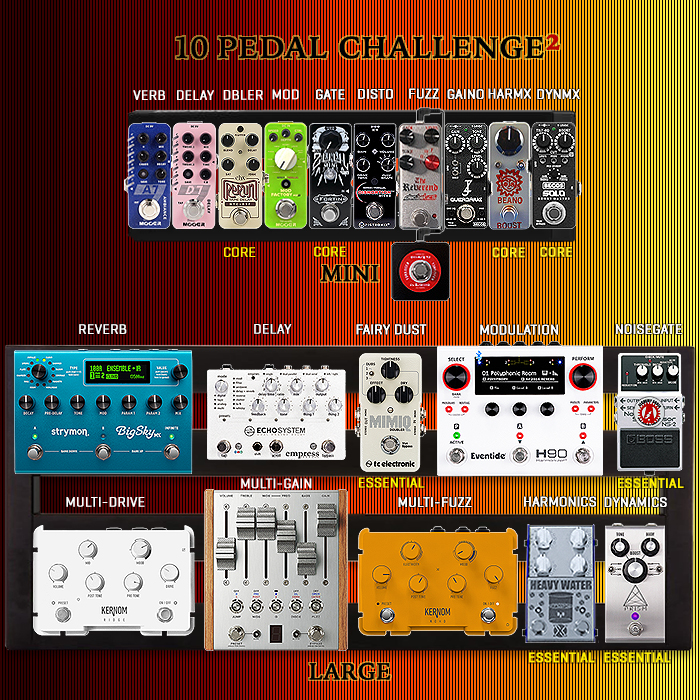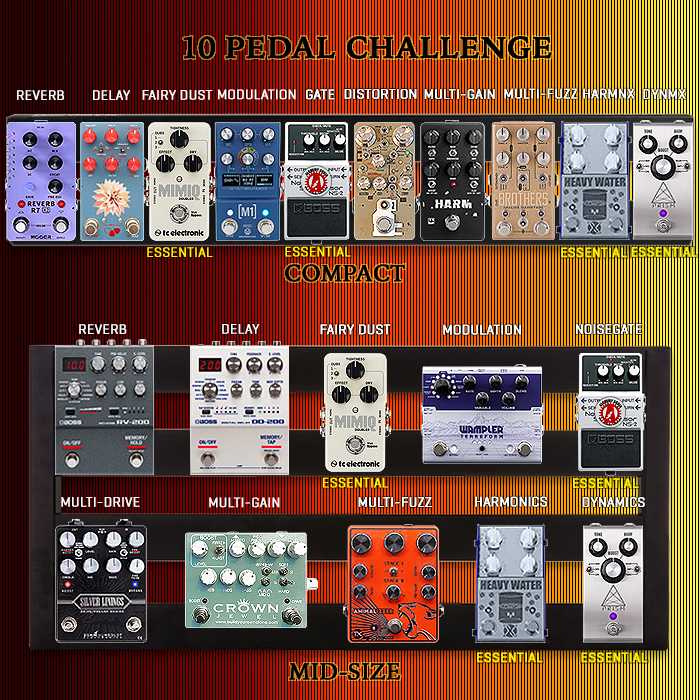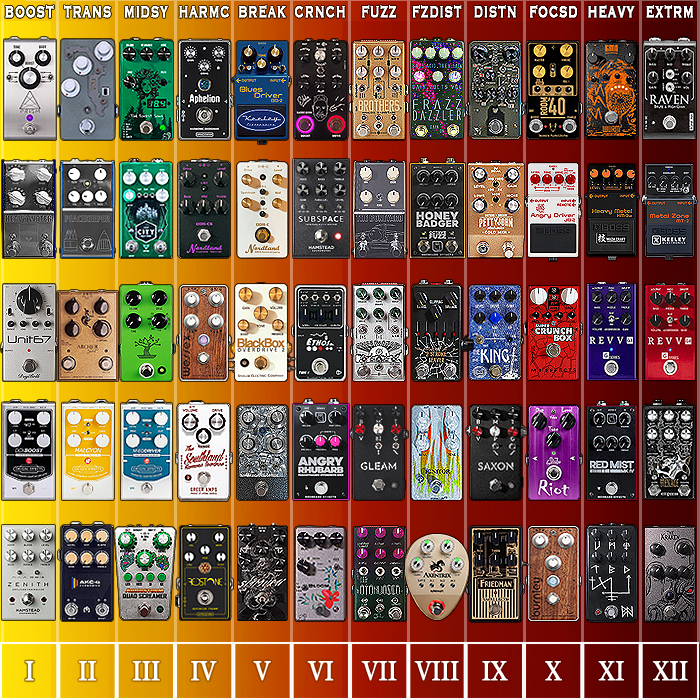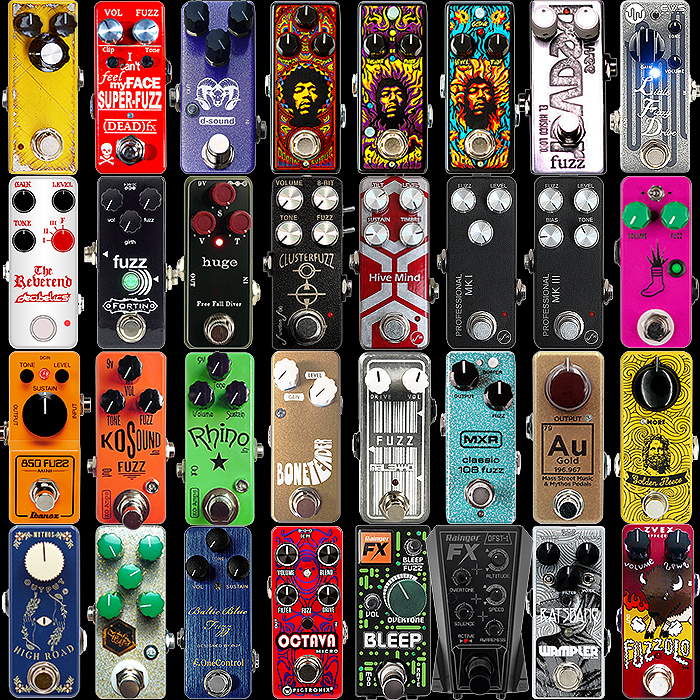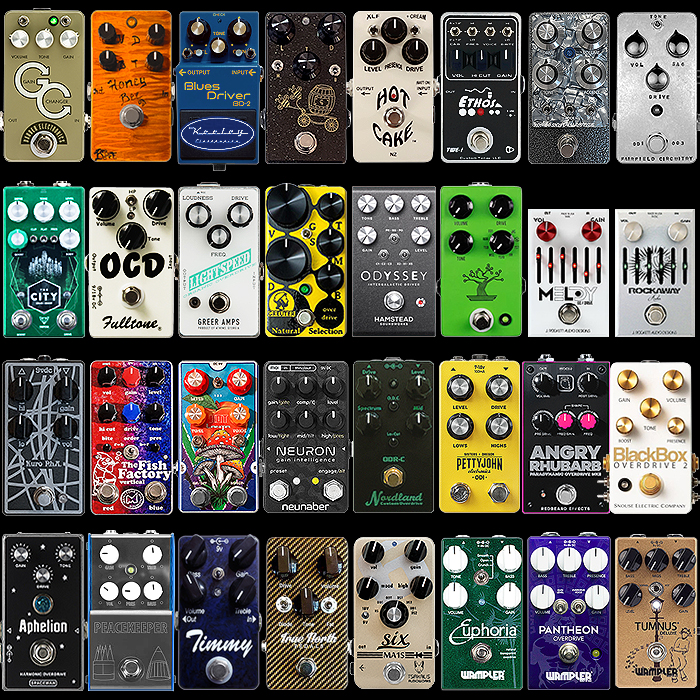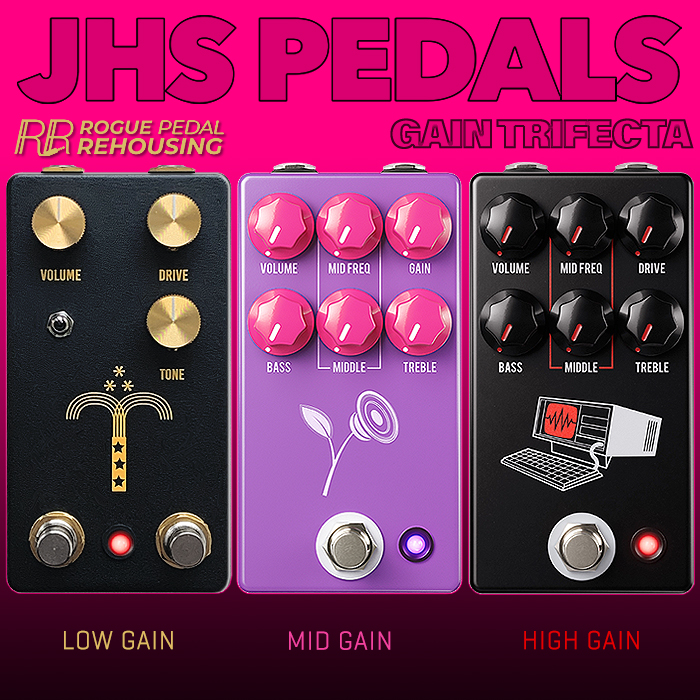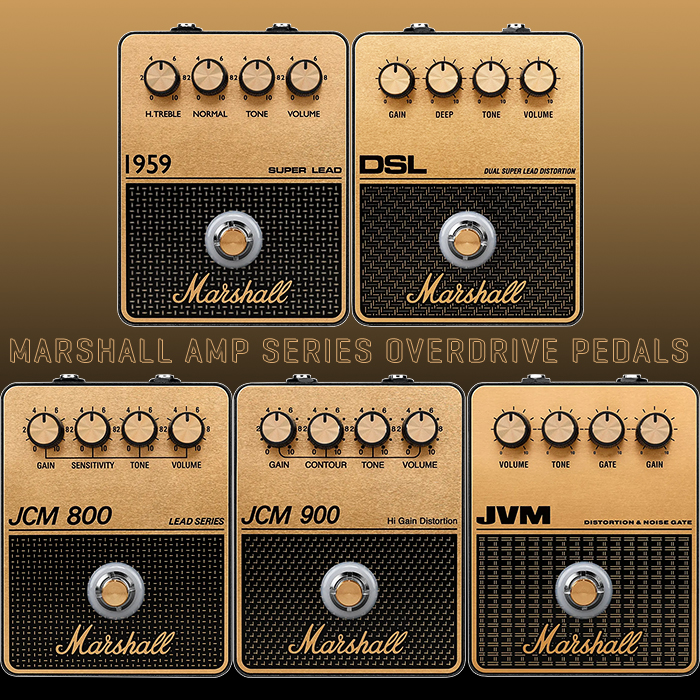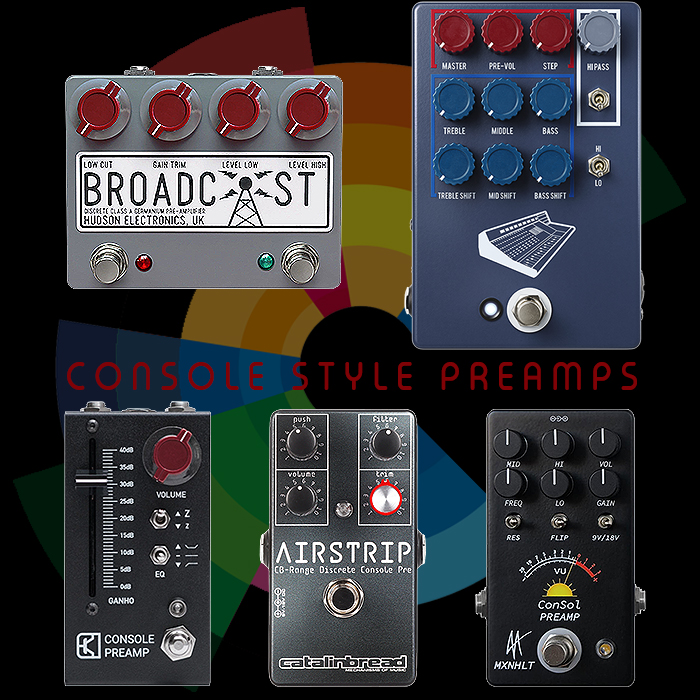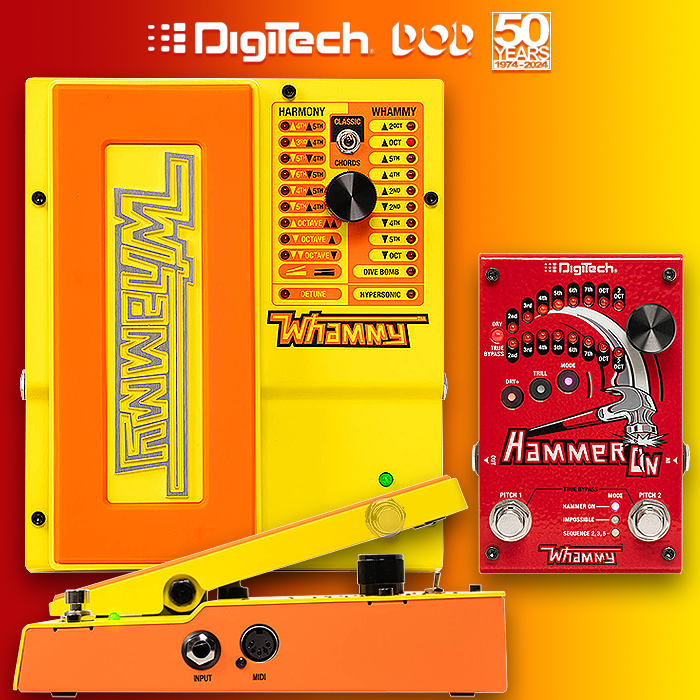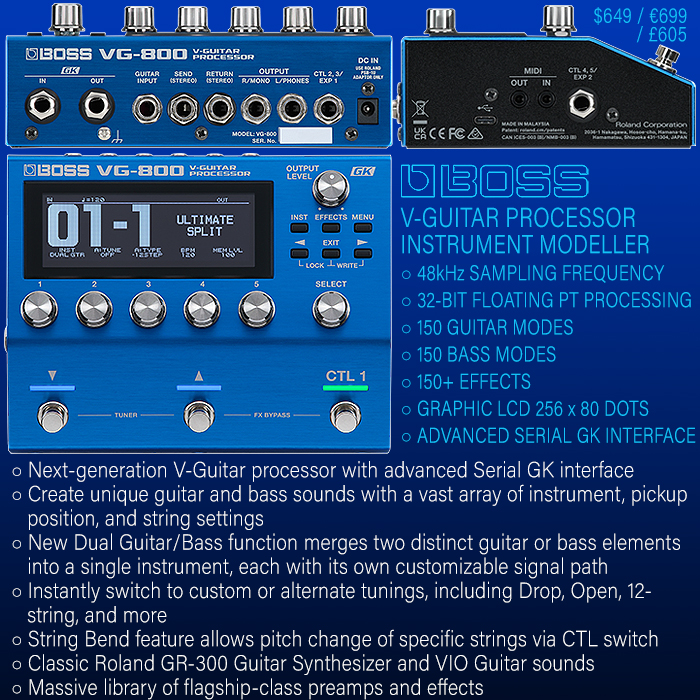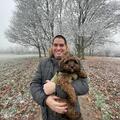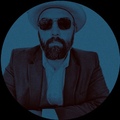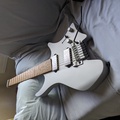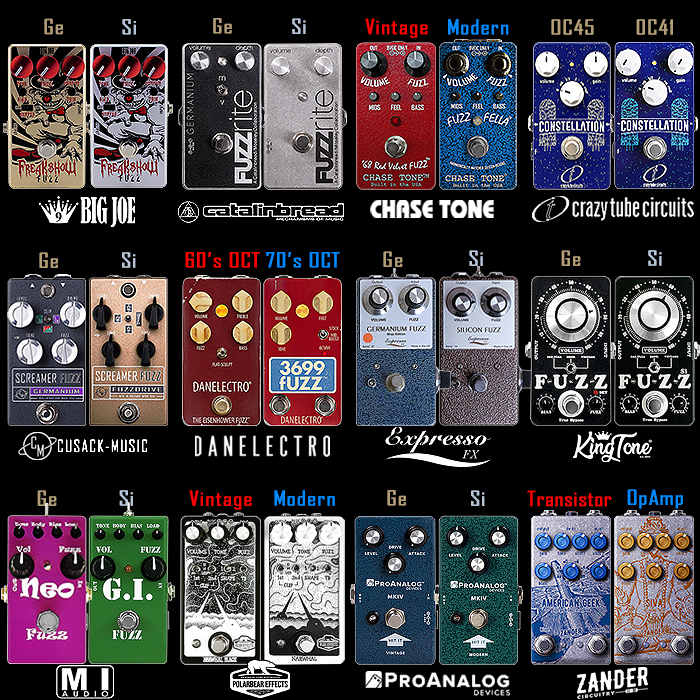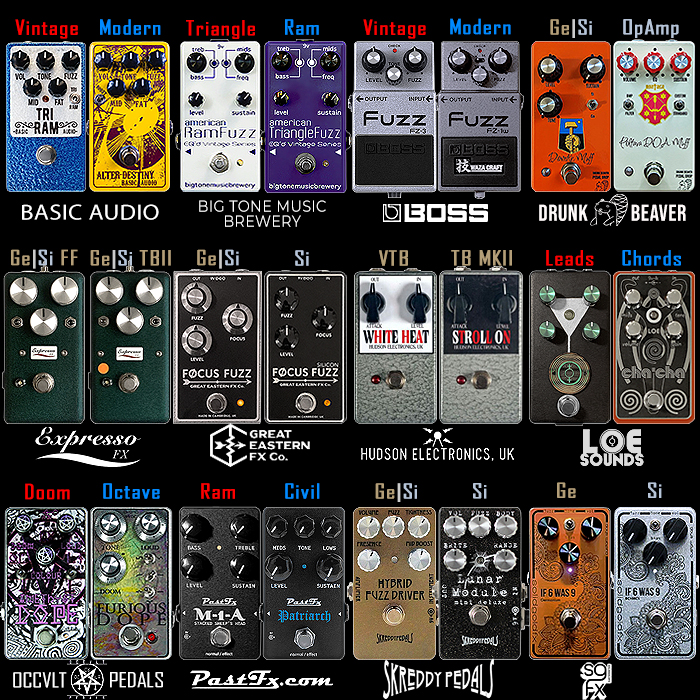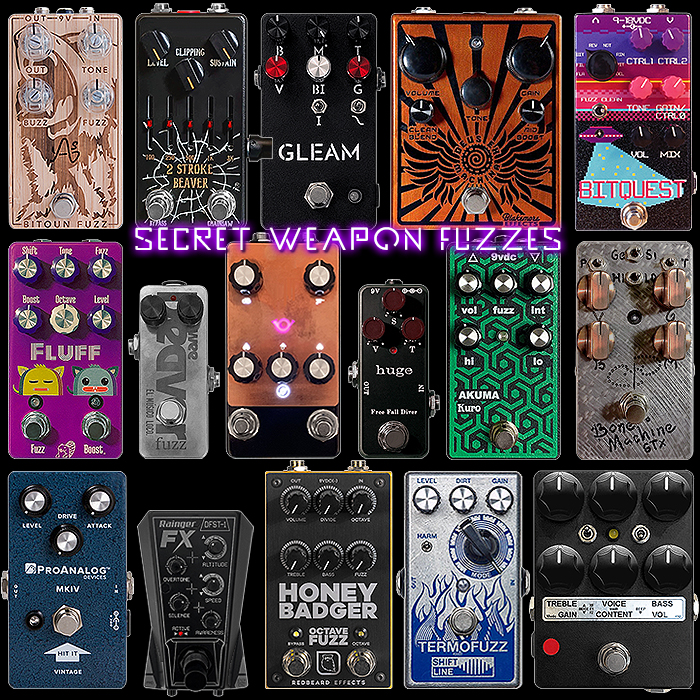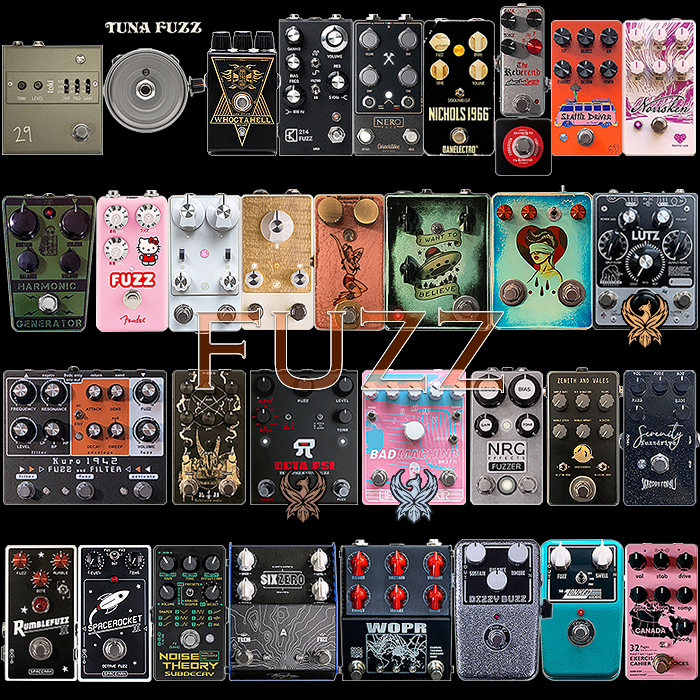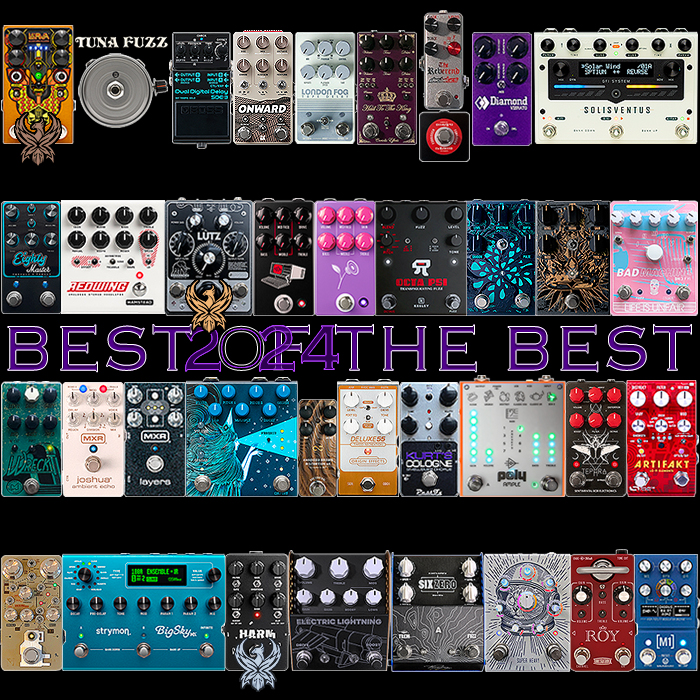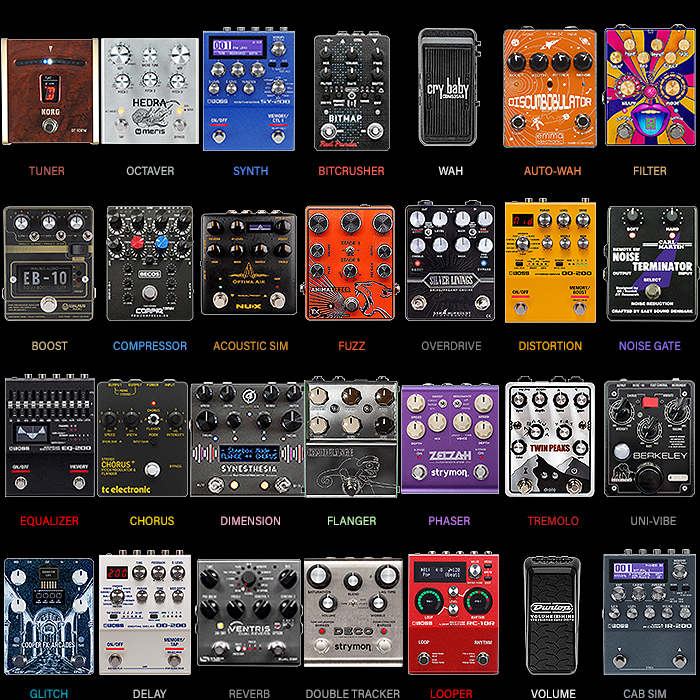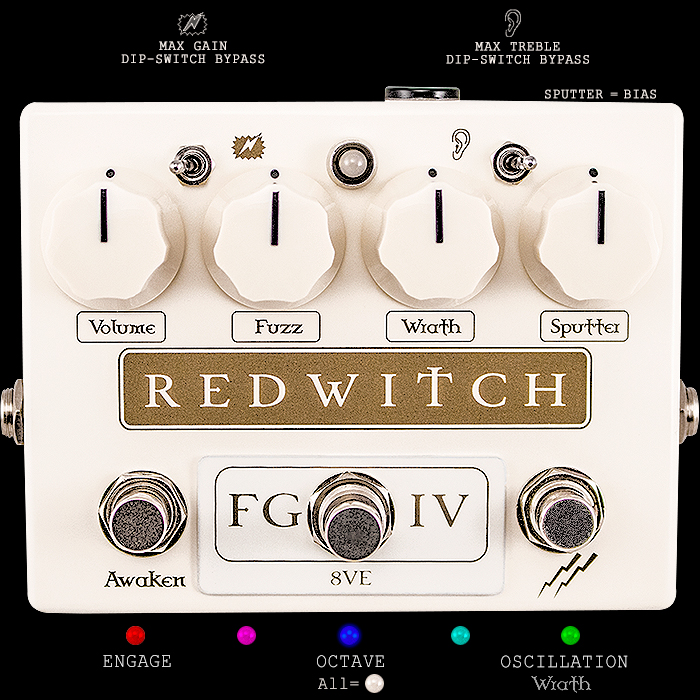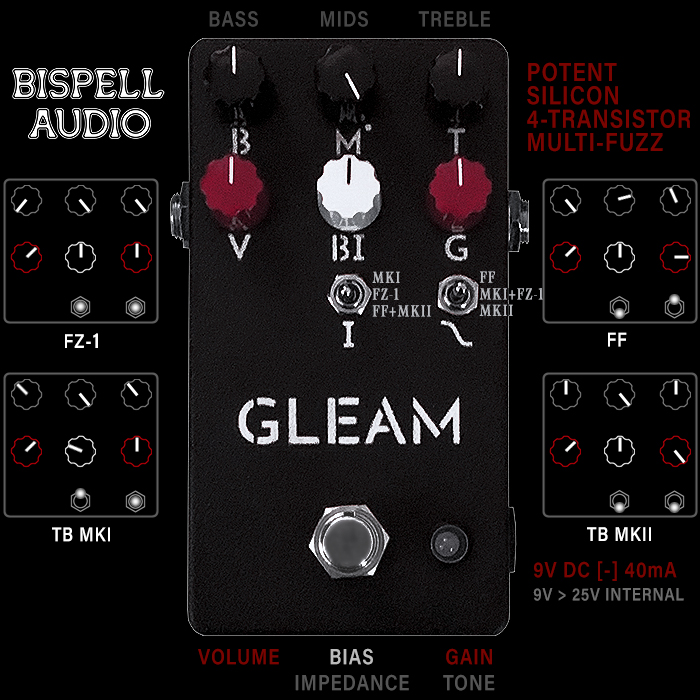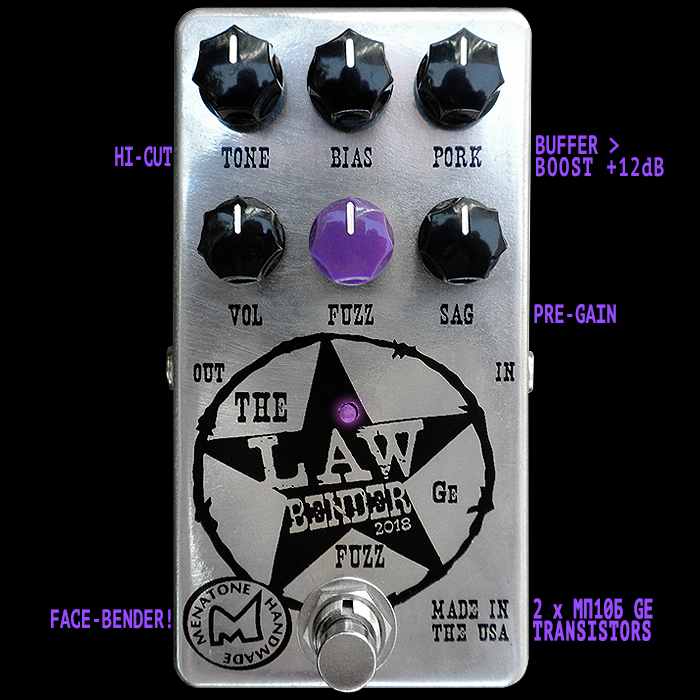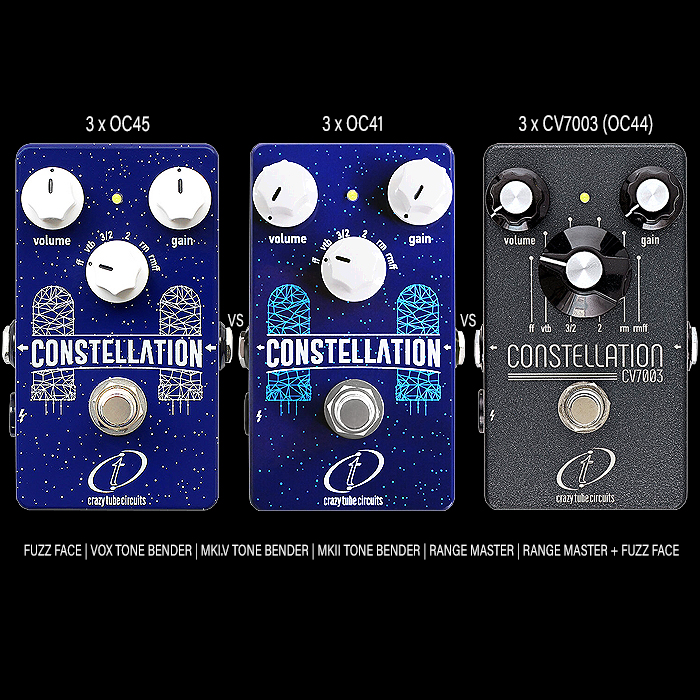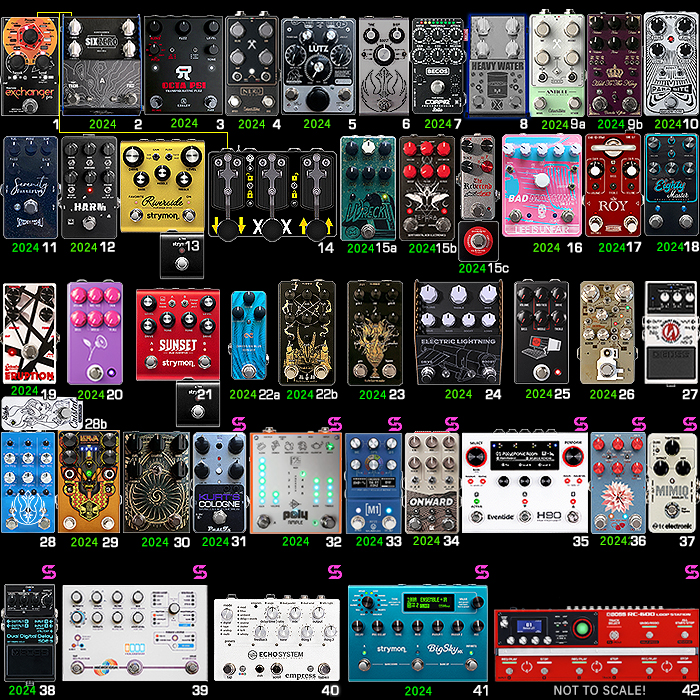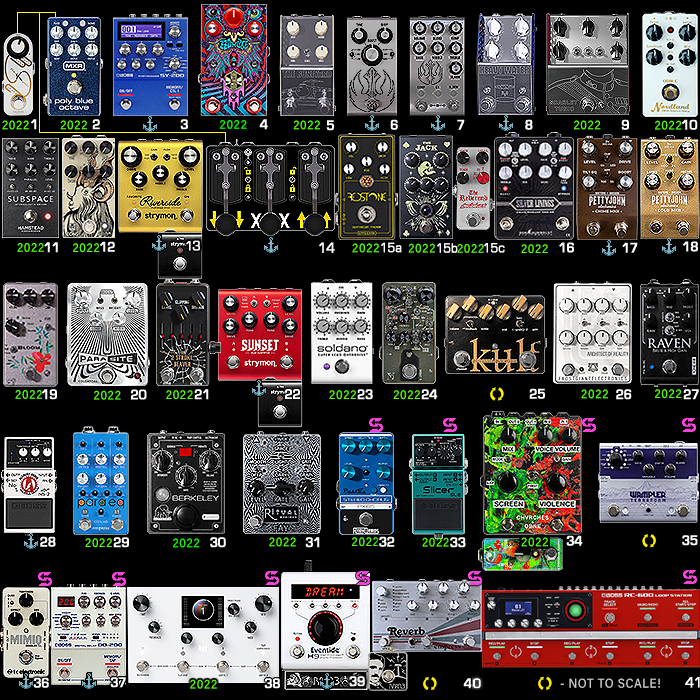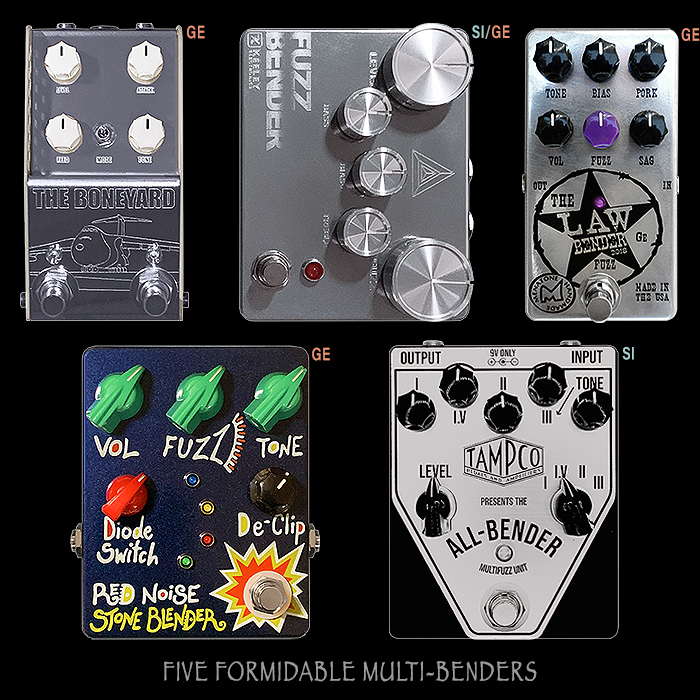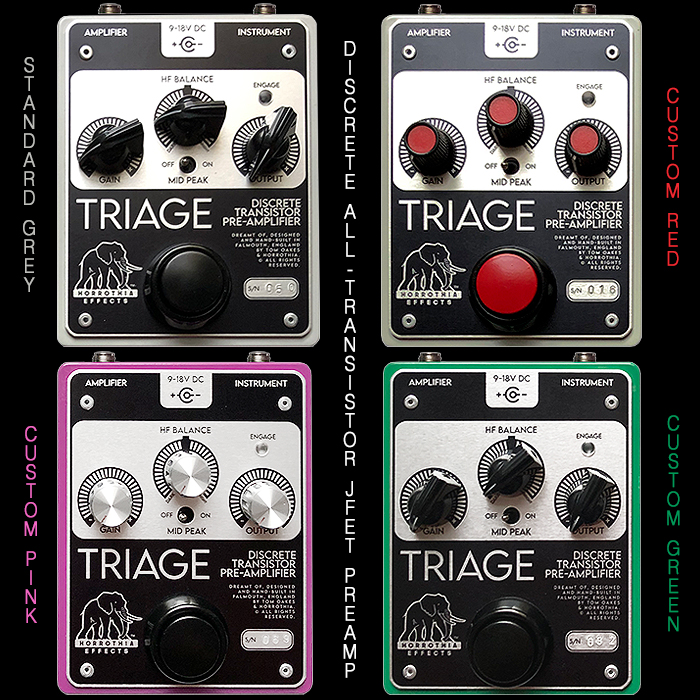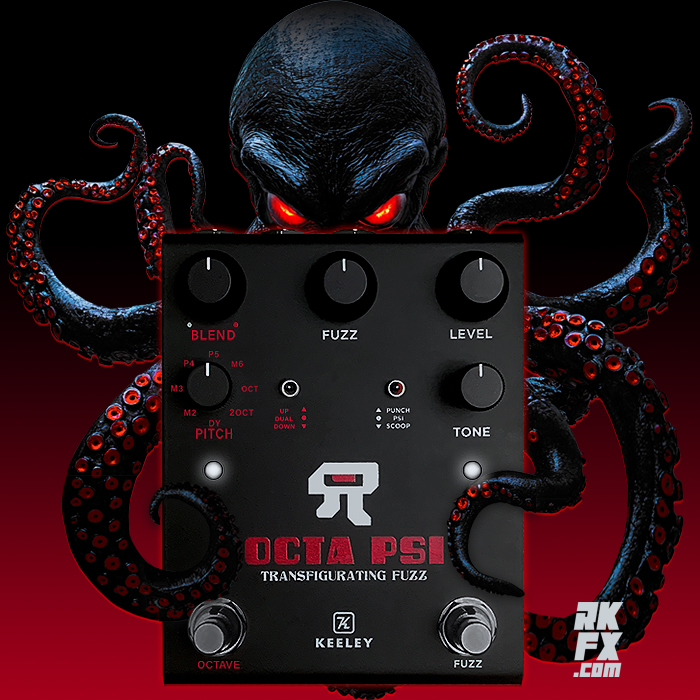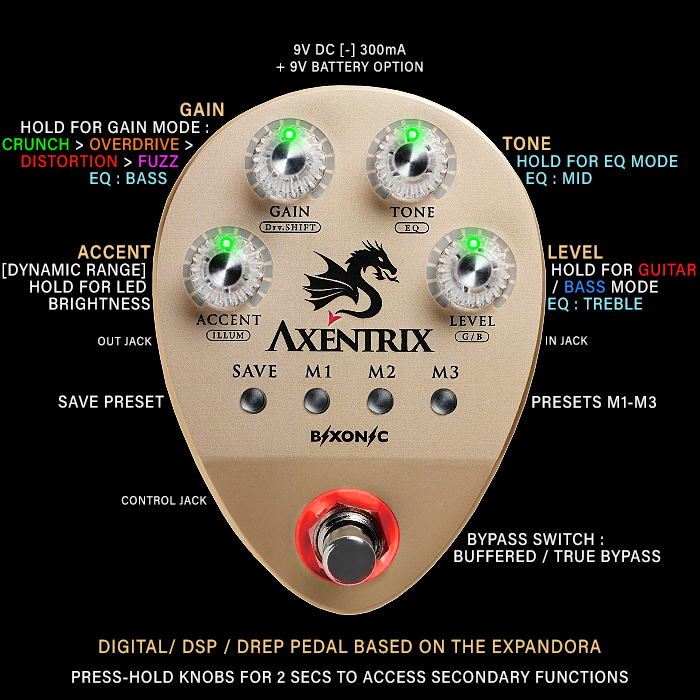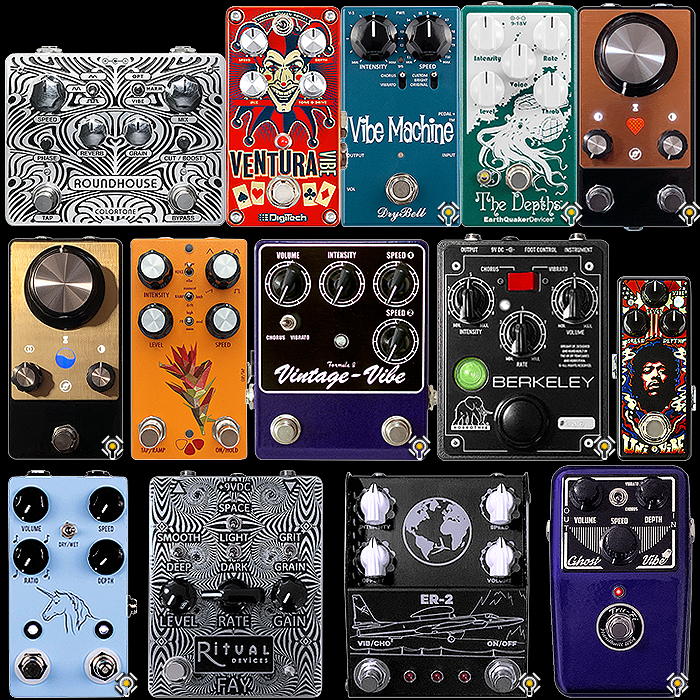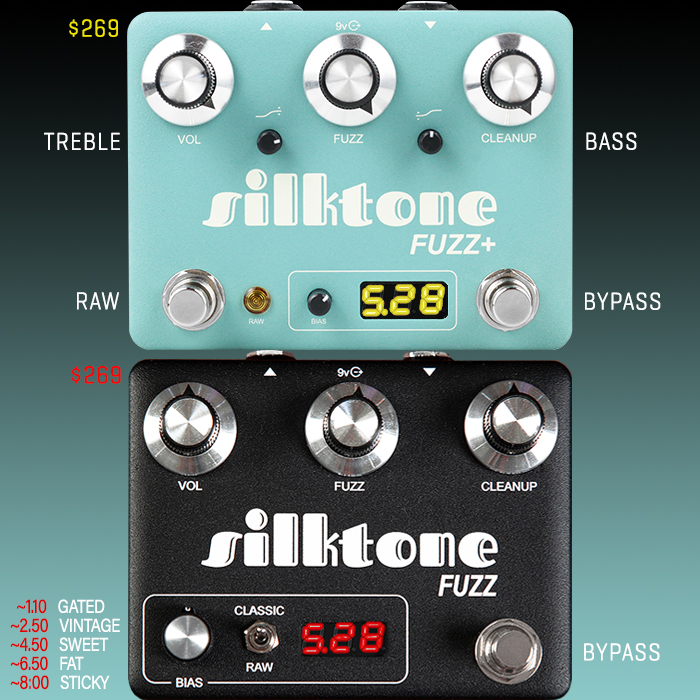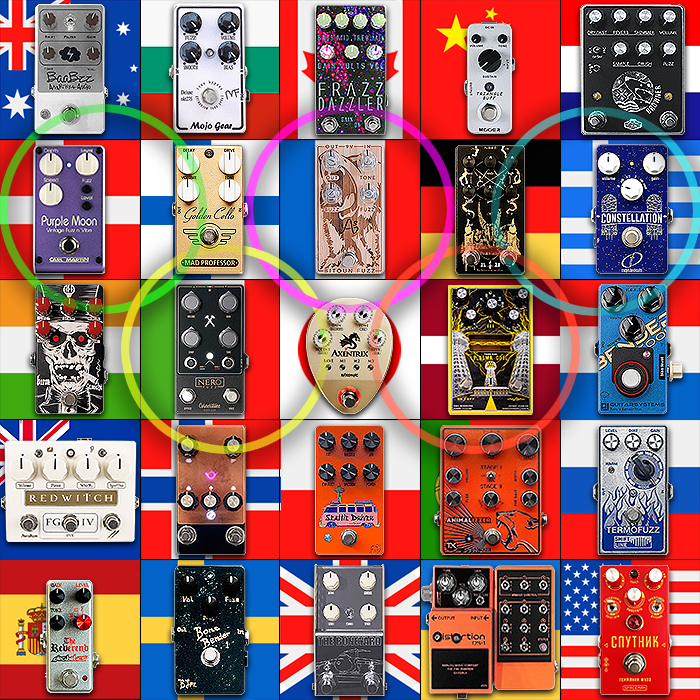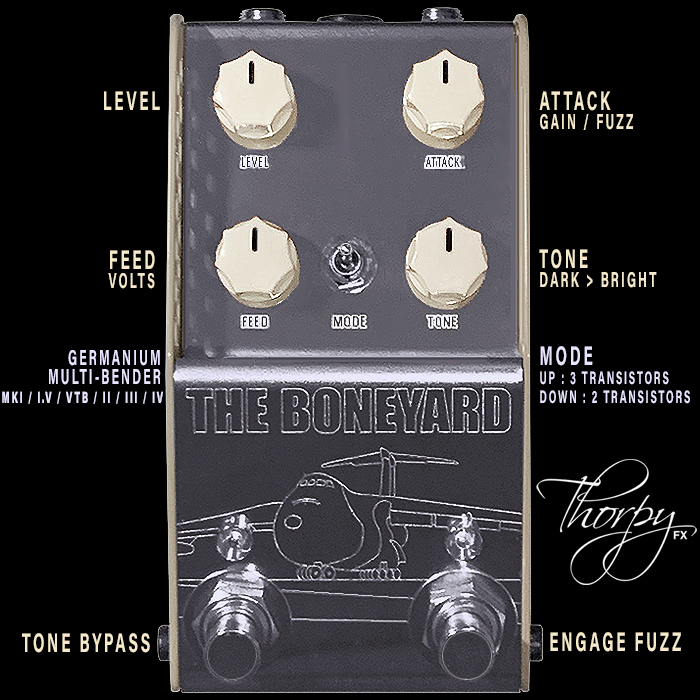Horrothia Effects crafts the extraordinarily expansive, high-fidelity, super versatile 3-Transistor Lütz Full Range Classic Fuzz
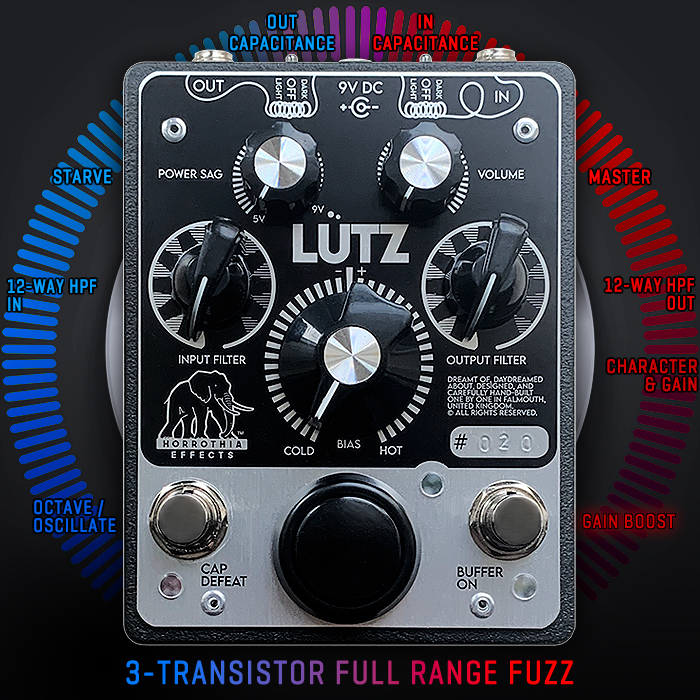
When Horrothia’s Tom started down this path, he was determined to make the most wide-ranging classic fuzz - one that allowed for the maximum of tone-shaping, and delivered octaves and feedback oscillation on top of a kaleidoscope of different tones and textures.
And what we’ve ended up with sets a new benchmark for classic fuzz, where 7 controls and 3 footswitches give you access to everything you might desire from a fuzz - there are so many clever touches to this design - that I will endeavour to rationalise and explain here below. Tom has really thought of everything and delivered his masterpiece in such a precise and elegant fashion.
I feel it’s best to start with a brief explanation of the control topology - and how those different knobs and switches interact.
Controls - Output Curly Cable Capacitance Simulation : Light (short) / Off / Dark (long), Input Curly Cable Capacitance Simulation : Light (short) / Off / Dark (long), Power Sag (Starve) : 5V > 9V, Volume, 12-way HPF Input Filter (c. 3Hz > 2kHz), 12-way HPF Output Filter (c. 3Hz > 2kHz - different set of capacitors!), Bias (Character & Gain) : Cold > Hot, Cap Defeat Footswitch (for Harmonic Overtones, Octave & Oscillation), Main Bypass Footswitch, Buffer On - Gain Boost Footswitch.
We’ll start with the key settings, and then ramp up from there!
When you get the device, at least per my experience, the two HPF Filter dials are set to their starting position [1] which is around 7 o’c, moving them in a clockwise direction progressively removes more and more low-end and eventually mid-range frequencies too, going from a deep full-fat voicing, to an increasingly sharper and brighter voicing with more harmonic overtones.
As a typical starting position, Tom recommends :
"Input and Output curly cable switches off, Power Sag at 100%, Volume 20%, Input and Output Filter at 1 (lower left), Bias at 50%, Cap Defeat off, Buffer off."
I typically have the Volume set a little higher for my preferences, and perhaps a touch more Bias Gain too - but those are indeed great starting positions.
Then as you lower the Power Sag (more voltage starve!), you need to compensate with more Volume and more Bias Gain, and you soon get to a point when you need to kick in the Buffer Boost too.
Harmonic Overtones, Octaves and Oscillation

Tom added a magic button to his fuzz - in the guise of the Cap Defeat footswitch - which removes the main power capacitor from the circuit - which with the main Bias Gain dial turned up - typically within the last quadrant - or from around 3 o'clock onwards - you induce that circuit into self-oscillation. You need to lower the Power Sag control and your Guitar Volume at the same time - and then you can kind of use the Lütz as a sort of Fuzz Drone Machine - just playing around with the pedal controls - with the Bias Gain knob the key one among those.
This is where the Input and Output Filters increasingly come into play for me - as they help accentuate the harmonic overtones - and hence harmonic octaves (sort of Superfuzz style), which progressively get sharper and more cutting. At which stage I turn to the Curly Cable Simulation switches - which mostly act as dampeners for me - rolling off the high end in 4 kind of stages overall - with the Input switch being the milder / less pronounced one - in fact I mostly just used that on the lesser-cut Light setting - when both the HPF Filter dials are kind of either side of their noon positions.
Tom explains the 2 x HPF Filters (capacitor arrays) in detail as follows :
"The input and output filters have a different set of capacitors, tuned by ear for the best range. They are not at regular intervals, but are bunched up around the top end (closer spacing) where the ‘vowel’ sounds are, and then falling in frequency, linearly spaced and then with logarithmic spacing. I prototyped In and Out filters with the same cap values and because they both have a different effect on the circuit (input filter changes gain as well as high pass filter corner frequency) so a more tailored approach seemed musically much better."
"The lowest high pass filter frequencies will be around 3Hz (great for bass guitar / synth) and the two highest are around 2kHz or even higher. Big range! Because of this very mathematically uneven but musically pleasing approach, I purposefully didn’t label the filter positions with a number / frequency because I felt a more esoteric / tactile aesthetic was appropriate."
So for my preferences - I see those 2 filters as sort of radio tuning dials - where you get really interesting harmonic intersections in varying the two sides in various different combinations - where I for instance prefer Input Filter in position [1] with Output Filter in position [6], as well as Input Filter in position [5], and Output Filter in position [7].
There are so many combinations that work well, and it will depend on the nature of your own guitar and its pickups as to what works best for you. As soon as things start to get too sharp and wiry - you can dial back your guitar volume and apply the Curly Cables Dampeners etc.!
For a lot of those settings you need to fine-tune the main Gain Bias, and the Power Sag, as well as tweak your Guitar Volume Knob. Many of my favourite settings occurred with the guitar volume knocked back a fair bit. Of course you often then need to compensate with more Bias Gain, Pedal Volume, and by applying the Buffer Gain Boost.
One of my favourite settings has Curly Cable Sims off, Power Sag @ 9 o'c, Volume @ 2 o'c, Input Filter position [1], Output Filter position [6], Bias Gain @ Max, and all footswitches on! One for the brave!
I actually mostly prefer to have the Buffer Boost switch semi- permanently on, and then it's mostly your guitar volume knob that holds sway over the nature of your output. Any genuine fuzz fan will be used to riding their guitar volume - and for this pedal it's a big part of the overall experience!
A Myriad of Superior Sounds
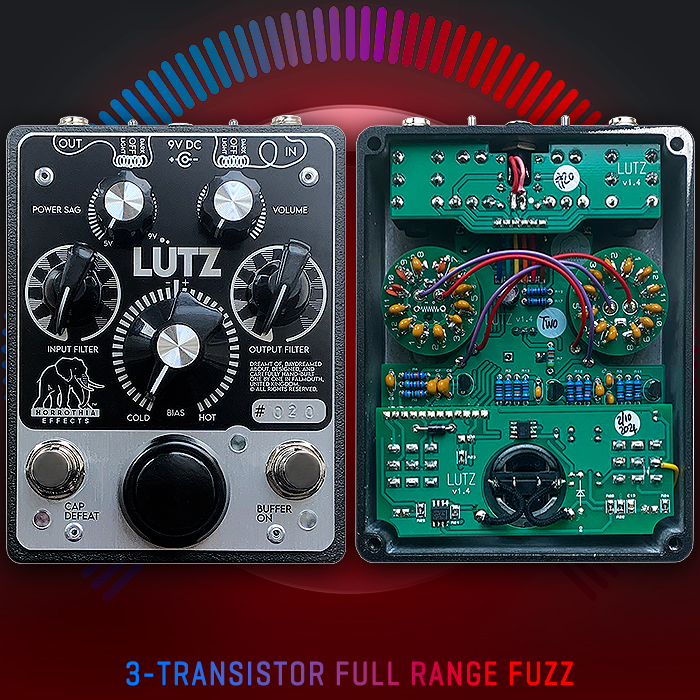
This is exactly the kind of fuzz pedal I love - a fully weapon's grade hot-rodded fuzz with a proper explosion of tones and textures onboard. The three specially selected silicon transistors perform superbly at the heart of this pedal - straddling both Tone Bender and Fuzz Face textures and much more besides - but with those added oscillations and drones and sort of super fuzz style harmonic overtone octaves too - just every which way superb!
Those two HPF filters really work a treat in emphasising and tuning up the nature of your overtones / harmonics / octave harmonics. And I always get a better output by experimenting with the two filters, while there wasn't always a particularly organised methodology at play - I was mostly just trying out all the different combinations - constantly tweaking those then in tandem with the Sag, Volume and Bias Gain, and kicking the Cap Defeat in and out of the circuit - and just seeing what emerged - and what resonated. As mentioned - I mostly ended up having the Buffer Boost on most of the time. And if things get a bit much - you just dial down your guitar volume.
I didn't find too much use for the Curly Cable Sim options - which I've also referred to as dampeners here - in how they roll off some of your high frequencies. Anything besides the Input side Light setting turned out to be too much for me, and mostly I preferred the pedal with both of those in the middle / Off positions. Only ever bringing in the Input Light setting for when I had the 2 Filter controls at or beyond their respective midway-points. I guess if you're aiming more for those super violin-like smooth Eric Johnson tones - then the Curly Cable Sims become a lot more significant!
There is so much range within each of those controls individually, but exponentially more in their subtle combination with all the others. This Lütz is definitely a pedal tweaker's delight - and it certainly does require some degree of patience - in order to unearth everything this pedal is capable of.
Neither of the 2 demos released so far fully do this pedal justice - but they demonstrate that you can easily deliver smooth and musical tones, as well as more spiky and textured ones. So the Lütz should be great for both cork sniffers and noisemakers / noiseniks alike. This is truly a proper unfettered and unlimited fuzz - which by all means you can tame if you want to, but it can get properly beastly nasty too in all the best ways - I say you have much more fun when totally unleashing it and letting it perform to its full potential.
I really love everything about this fuzz - including the slight mystery of the 2 x HPF Filter dials - that altogether essentially trains you to tune everything in by ear - much like Tom did when designing and refining this pedal.
And the insides are just as impressive as the outside on this one - with those beautiful circular capacitor arrays. I'm sure I'm repeating myself by now - but this is just such a cleverly engineered pedal, and the final execution is utterly perfect for me. Genuine fuzz fans will wholly and totally adore the Lütz!
Just a final mention as to the origin of the Lütz moniker. Many will associate it with famed Austrian skater Alois Lutz whose signature 1913 toepick-assisted signature jump forevermore carried that name - and the 'Lutz' jump is now a staple of international figure skating. While for Tom the sound of that name has simply just existed in his subconscious for many a year - he just intrinsically likes the sound of that word and wanted to use it on one of his pedals. And this particular fuzz circuit seemed to be the right candidate at the right time. Perhaps the spirit of Alois Lutz lives on beyond his earthly demise in 1918, just 5 years after his signature move was first recorded!
The Horrotha Effects Lütz Full Range Fuzz is made in small batches, and can be ordered direct from the Horrothia Reverb.Com Store - when it's in stock, these are priced at £325 and equivalent (Reverb.com will calculate your local currency - c. $445 USD), where mine is numbered #20 and comes with those elegant silver top knobs mostly (my preference!). You need to keep your eyes on Tom's Horrothia Instagram as these fuzzes tend to get snapped up very quickly - www.instagram.com/horrothia_effects/
In fact a new batch should have gone up by the time this article goes live!
Obviously there's a tonne of work that goes into the build of each of these superior tone machines - so the relatively high price is actually much better value than some might think. Very highly recommended for all genuine fuzz fans! This is for when you graduate out of the Face-Bender academy to a whole higher plane of fuzz expression!

Demos

